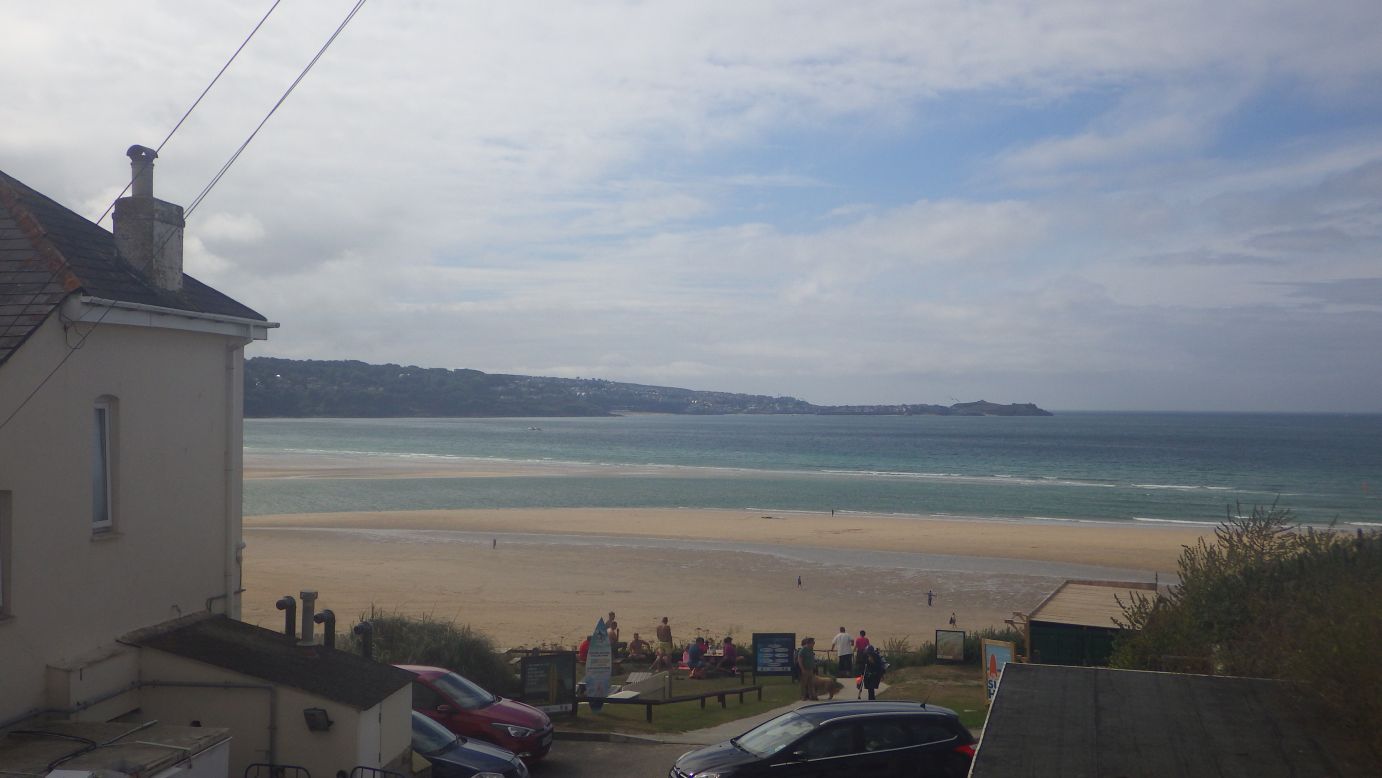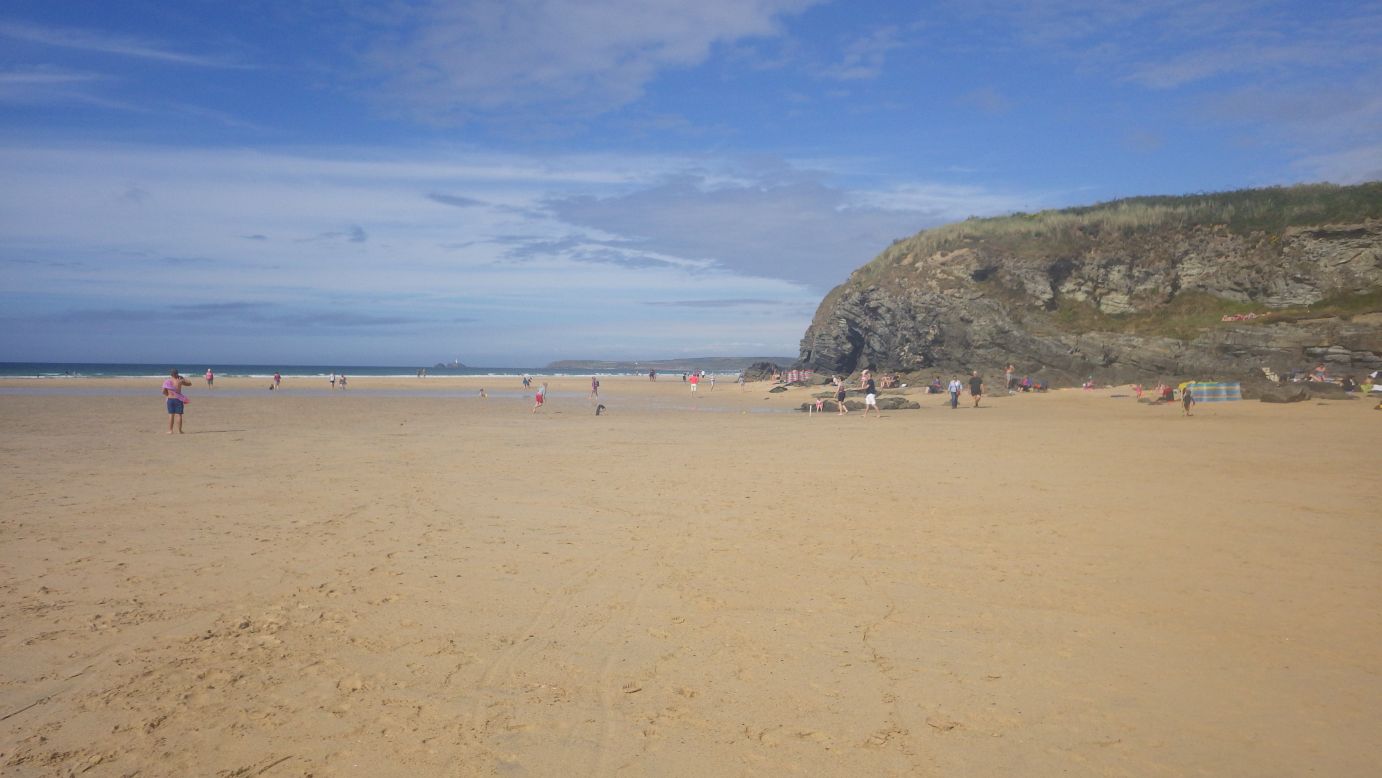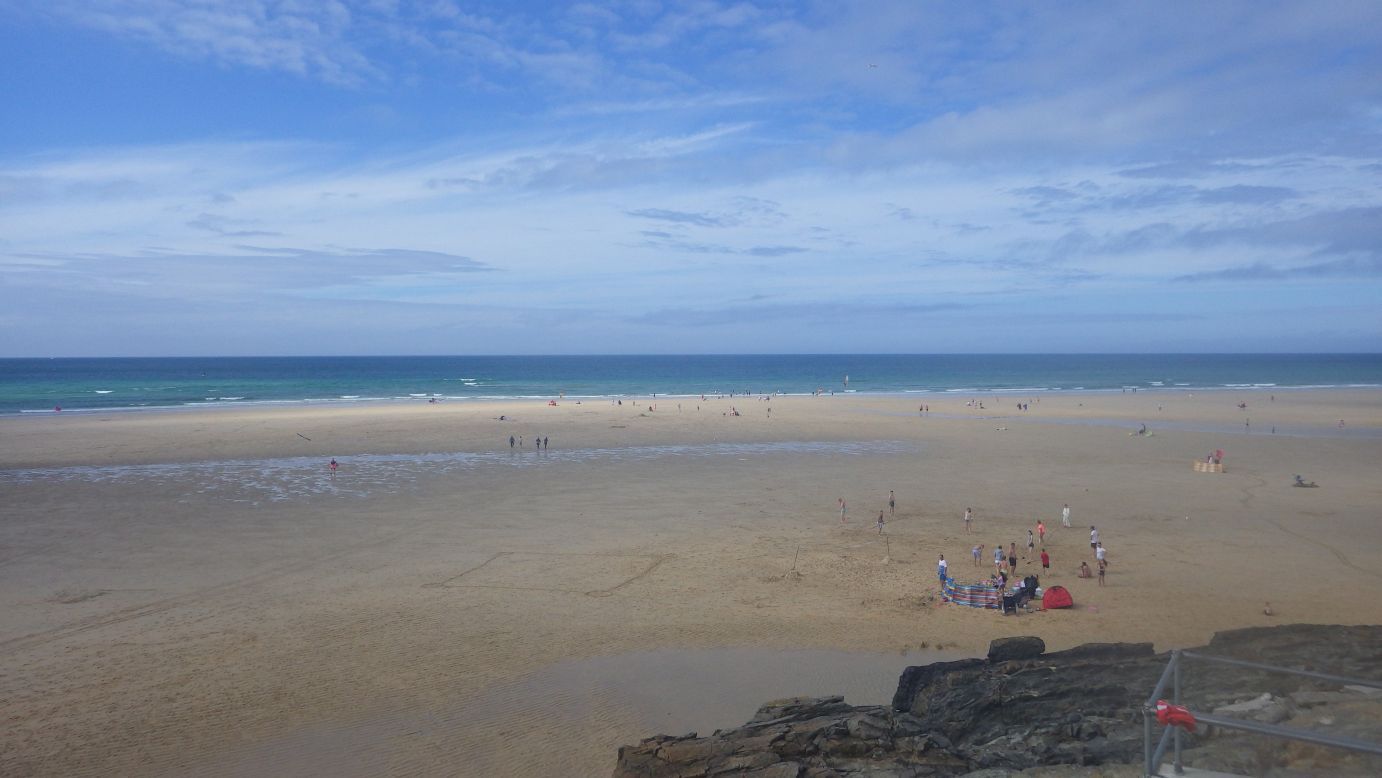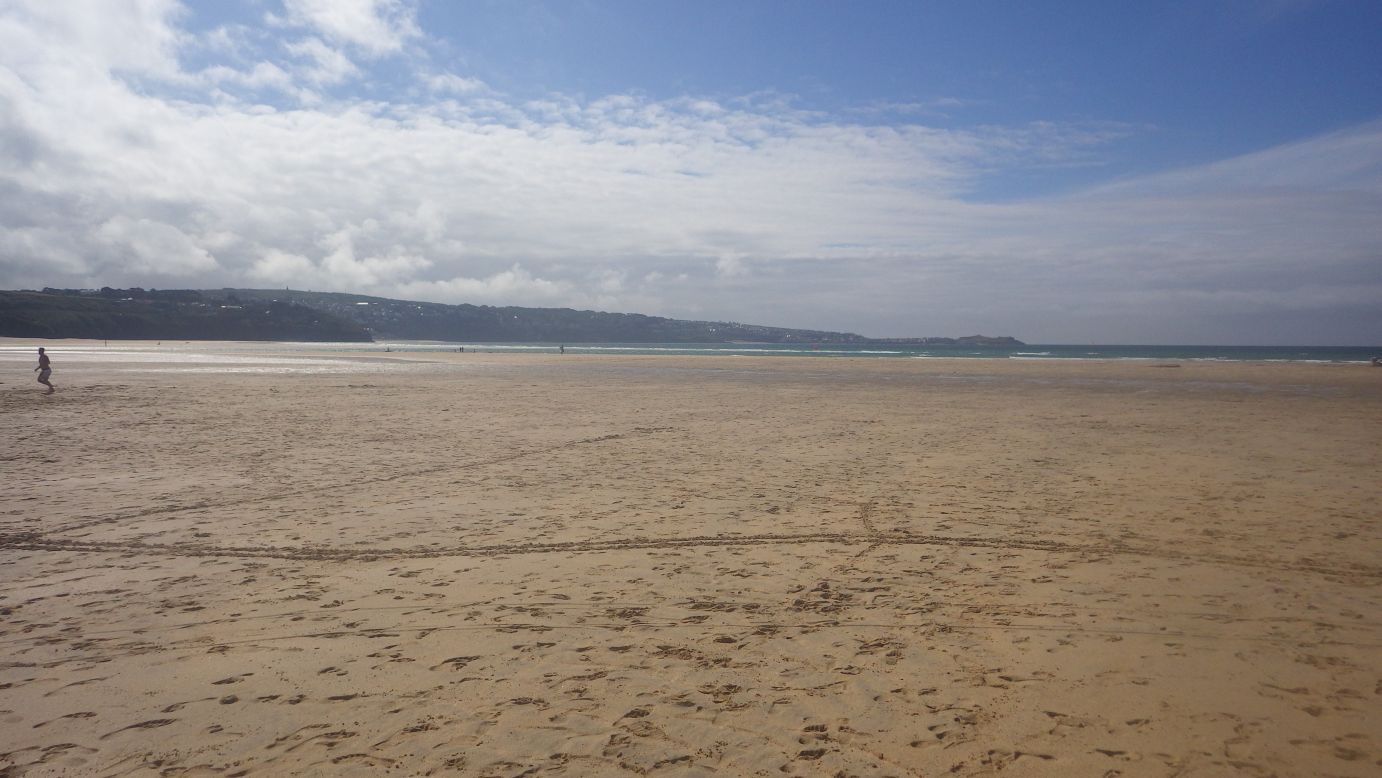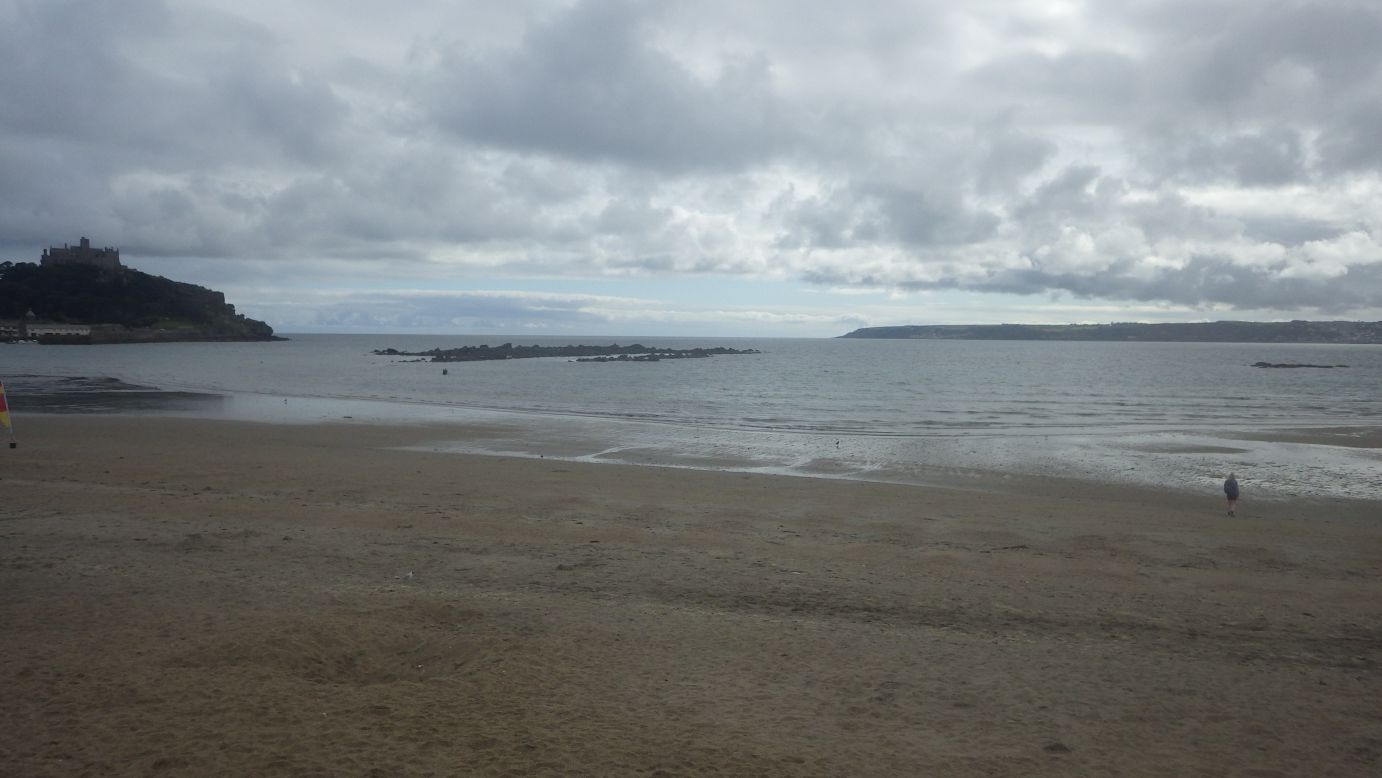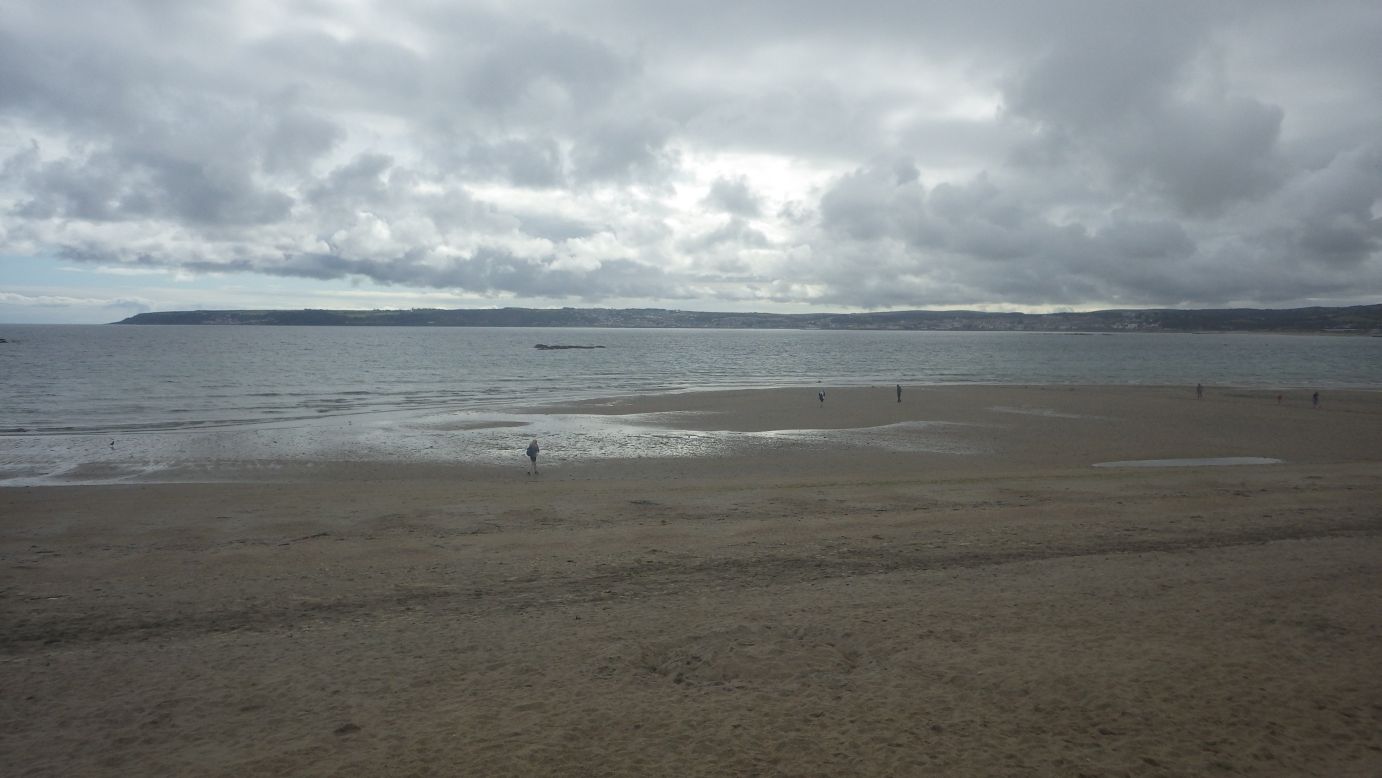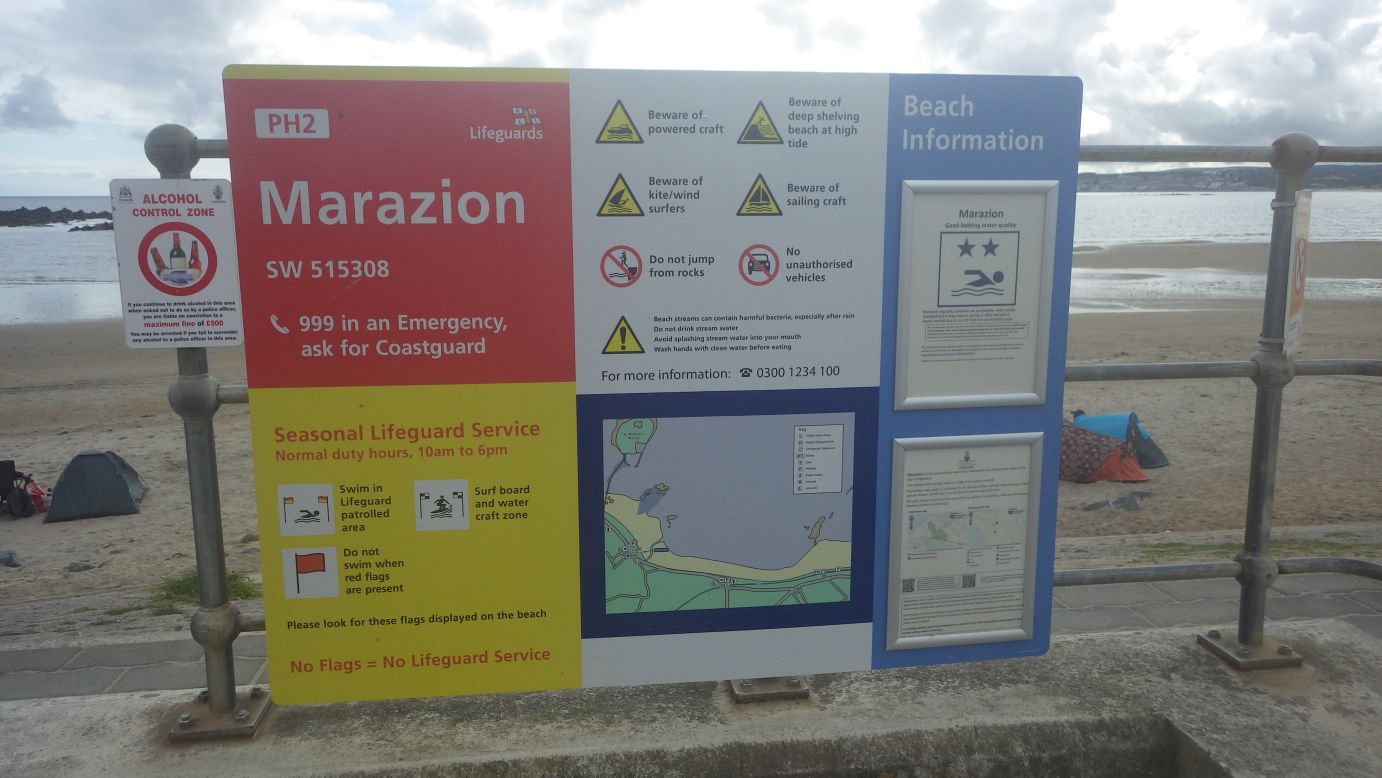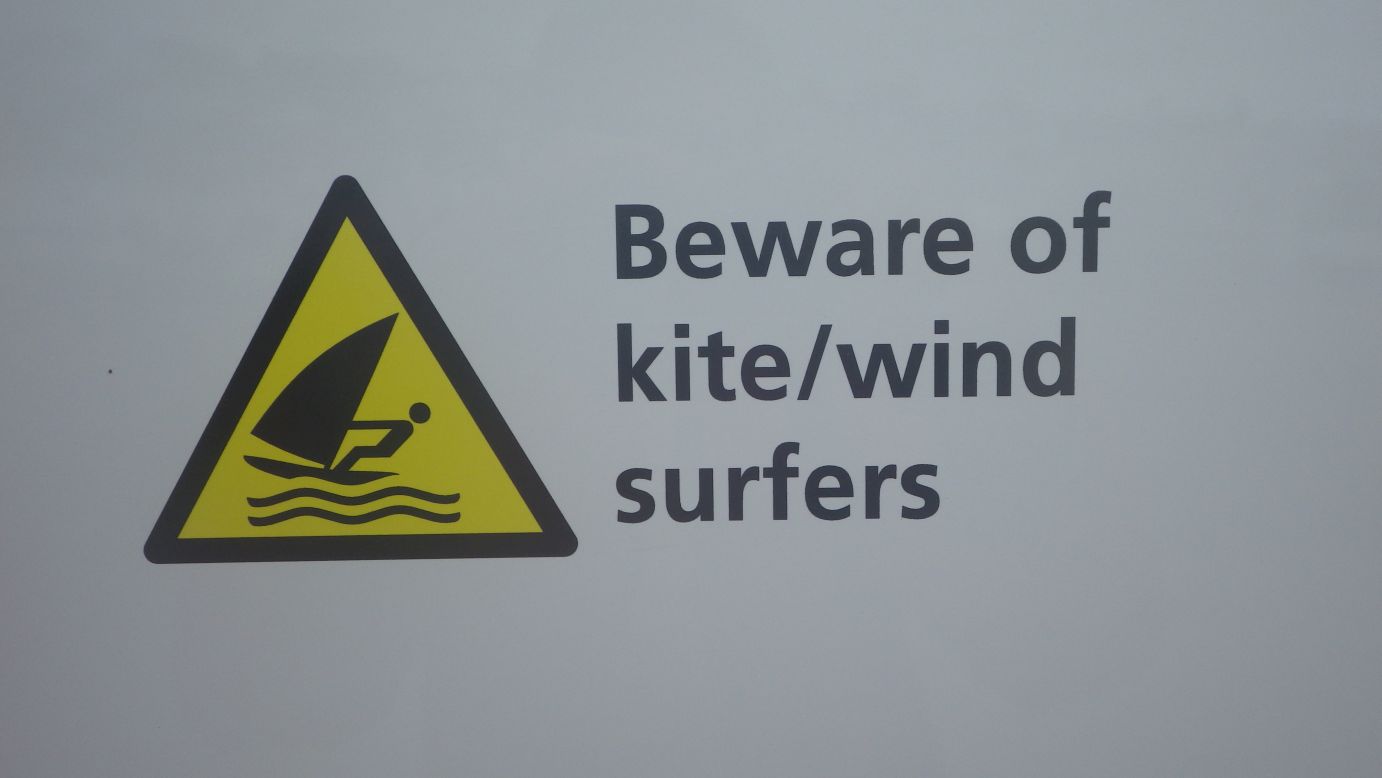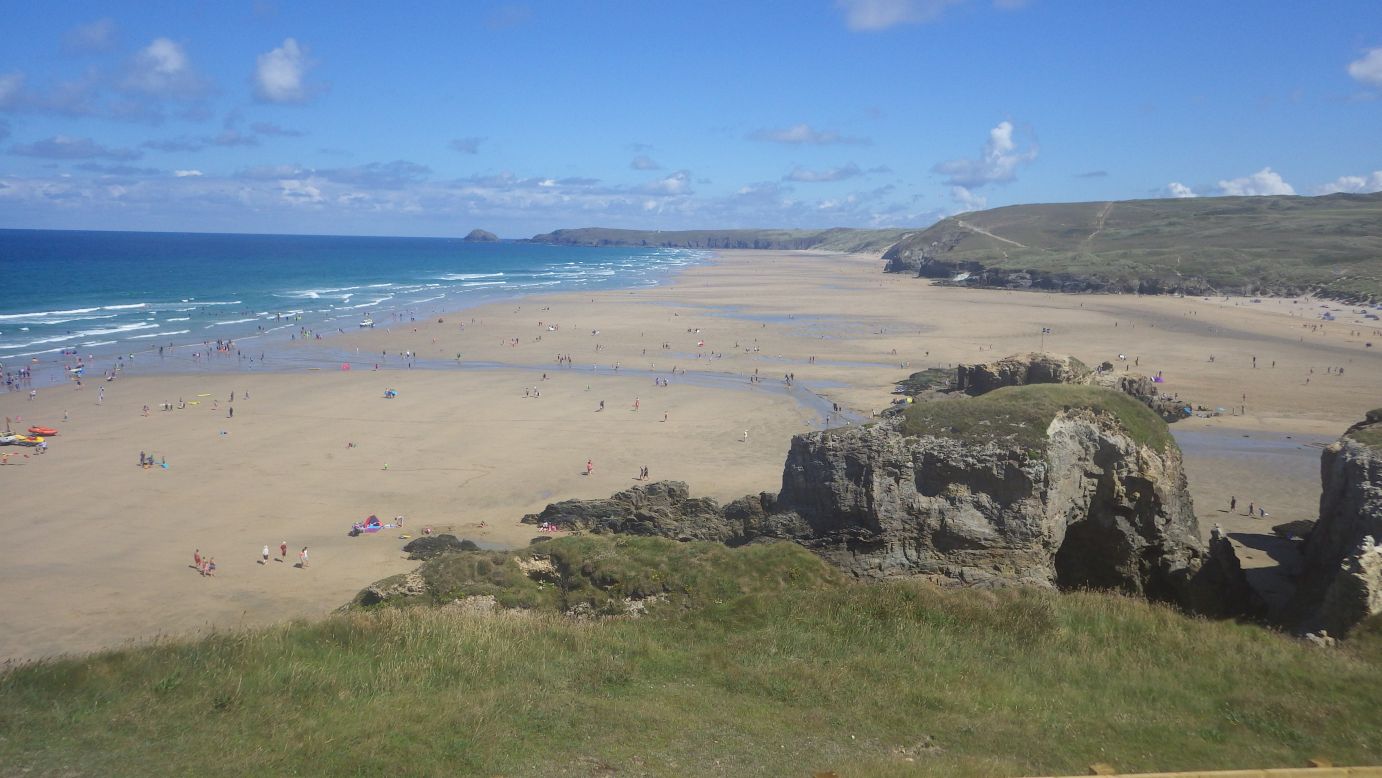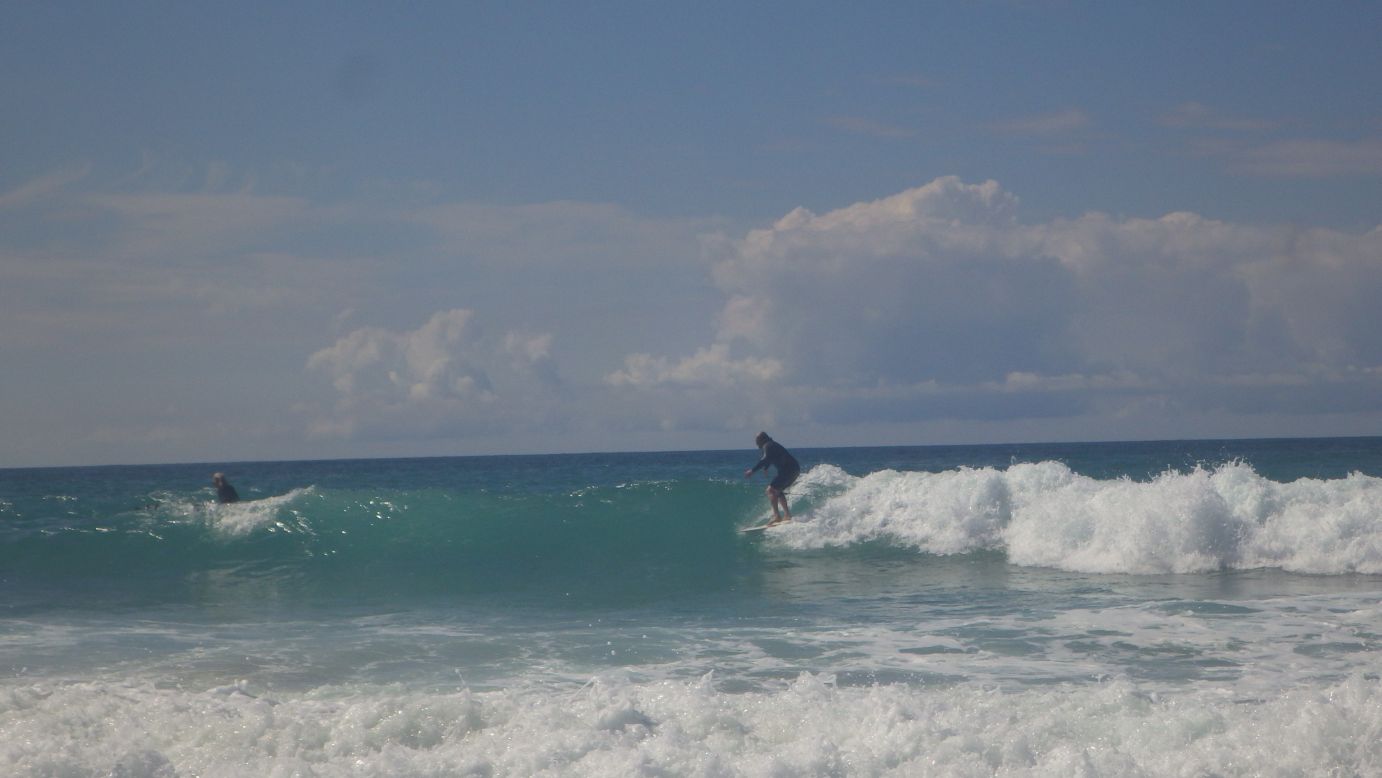In this article, I will share the information I collected on the web, and directly in some spots, useful for those who might be in Cornwall and would try to windsurf there. In addition, I will provide some inspiration for those who want to fall back on surfing, very popular in this region.
Windsurfing and surfing: Cornwall, England
In light of my experience, the first advice I can give is to bring along your gear! In fact, if wave-surf rental centers are almost ubiquitous, the windsurf ones are scarce, and all concentrated on the South coast, overlooking the English Channel, and not on the Atlantic coast. By contrast, beautiful windsurf spots (some very challenging) are everywhere.
The only windsurf rental centers I identified (but not tested) are Big blue water sports, in Mylor Harbour (near Falmouth), and Windsurfing Center at Coverack, close to the Lizard Peninsula. The first is located in Carrick Roads, a very protected bay, which ensures flat water and works with all the winds. The center at Coverack, however, faces the Channel, and except with the wind from the East, also presents fairly flat water, or chop. Watch Andy King's video, in which conditions, also in the easiest spots, are shown.
We have not tried or verified this spot, but on windsurf.co.uk you can find an accurate description (Carrick Roads, Coverack). The coast overlooking the English Channel, in general, provides conditions suitable for everyone, and less tense winds (but also good storms, sometimes).
The Atlantic coast, from St Ives going North, has lots of beaches, some of which directly overlook the ocean (that is, oriented to West), other facing north or south, and a little more sheltered. For a list and a detailed description of these spots, once again, you can refer to windsurf.co.uk.
Among those that we have personally visited and that have most impressed us, definitely we have to mention Carbis Bay (near St Ives), which offers different spots going from west to east, proceeding along the beach (very large). The beach is open to the north, and to the west is protected by the promontory that ends with "The Island", near St Ives, where you have St Nicholas chapel (see map at end of article). The promontory dampens the waves arriving from the Atlantic, with the wind from the western sector, and spots to the west of the beach are better sheltered, with less high waves. We read on windsurf.co.uk, that, however, the waves here command respect even from experienced windsurfers, although we suppose that these are spots a little less extreme than those that directly overlook the Atlantic sea. The videos at end of article give you a good idea of the beautiful conditions that you may have in these spots (The Bluff and Gwithian). The beach is long and sandy, and, at low tide, very deep. With high tide, the shorebreak comes to lap the sandy dune and rocks that close the beach, and can be not easy to overcome.
Conditions can be fantastic with sideshore wind, ocean, beautiful, and clean waves, to ride in back or front side.
When we have scoured the spot (the one called "The Bluff", in the central part of the beach), conditions were absolutely quiet, with low waves (less than half a meter, more like a chop), and wind maximum at 20 knots (while on the coast West of St Ives, looking directly at the Atlantic, the same day there were 25 kts, and almost two-meter waves near the shore). In water, that day, we also saw riders not very experienced, and we believe that under these conditions the spot is within everyone's reach. It's really a pity that here there are no rental facilities and windsurfing schools (there is only a center for wave surfing, where, at least, you can ask for advice on possible dangers and conditions): it would be used by many in summer time. The presence of bathers during the week, even in July, appeared limited and confined only in points guarded by RLNI (public service surveillance of the beaches, which is quite strict in requiring compliance with the rules). We do not know if on weekends, it is more crowded.
The bay seemed much more suited than that of Penzance, which, however, is facing south on the Channel (and also protected to the west). Penzance Bay, in fact, has many points where there are submerged rocks, which emerge fully only at low tide; therefore, it is good to know their position, before risking a session (especially with winds from the south quadrant and waves). The rocky outcrops we spotted were present in front of the promenade in Penzance, and also to the west of St Michael's Mount. The area which we found to be most suitable for a windsurfing session (from a safety point of view, but perhaps not for best waves) is between Penzance and St Michael's Mount (from which, however, is good to stay away, because of the presence of these rocks). The video at end of article will help you assess the conditions that you may have in this spot. In any case, a chat with the local surfers before the session, is clearly appropriate. Even here there is no possibility to rent (there are only a sailing school - in Marazion, and a school of Kite - Oceanhigh, where you can at least ask for advice on submerged rocks, and more).
Further to the north, on the Atlantic coast, there are some spectacular beaches, oriented to the West, taking direct waves that arrive from the Atlantic. Even in calm conditions, at least a meter and a half wave is guaranteed. We have visited Perranporth Beach and Fistral Beach. The latter is the most popular beach for surfing in England, and windsurfers are not very welcome. To make a clear idea of the spot, through a well-placed webcam, click here.
Moreover, as you can read in windsurf.co.uk, with strong wind coming from the sea, here conditions are suitable only for the more experienced windsurfers (same situation in Perranporth beach, which is a bit "easier", because the sandy beach is wide, and the wave, that breaks in the shallow waters off the coast, a little more muffled). Try to see the video of the Red Bull Storm Chase 2014, at the end of article, to get an idea of the worse (or better?) conditions that you may have on the Atlantic coast of Cornwall. A webcam at Perranport beach, is available in the English section of waterwind dedicated to webcams.
In both these two spots, but the discussion applies in general to all the coast of England, the session must also be carefully planned by checking tide-tables. In fact, tides, here, have some impressive range of several meters (also ten). They produce changes in beach width of even 100 meters. In addition, at high tide, because of the decisive change of slope of the beach, the shorebreak near the shore gets often bad, and makes it difficult to enter the water with the equipment (you have these conditions, for example, at Fistral beach). The tide, moreover, involves the formation of treacherous currents (if not dangerous). For example, at Fistral beach, with high tide, you have a current that flows to the northern part of the beach, pushing onto the rocks in that area. For these aspects, it is good to have a chat with the local riders.
Here, below, we report the links of some useful websites for tide prediction in Cornwall:
http://www.bbc.com/weather/coast_and_sea/tide_tables
https://www.tideschart.com/United-Kingdom/England/Cornwall/
https://www.tidetimes.org.uk/
http://www.metoffice.gov.uk/public/weather/tide-times/
http://www.tidetimes.co.uk/
As regards the weather, in general, one of the refrence web sites for the area is:
https://www.wunderground.com/
In summer, these two beaches are quite crowded with swimmers in we, in case of sunny weather. During the week, and overcast conditions, the crowding is less.
As regards the water and air temperature, it should be noted that Cornwall is reached by the Gulf Stream. Do not wait too mild temperatures there, but not too stiff either. In winter, water temperature drops to 7-10 ° C (but not lower), while in summer it reaches 14-16 ° C. A wetsuit 5 mm in winter, and a 4/3 mm summer are adequate (the local riders use also lighter wetsuits, in summer). The air temperature in summer does not exceed 22-24 °C, in winter, generally, always remains above zero. The vegetation adapted to temperate climates testifies these conditions.
If you are unable to do windsurfing, you can easily fall back on wave surfing, because rental centers are everywhere, hiring equipment at reasonable prices (see article about our surf sessions). It is a very enjoyable sport, though not as easy as you may think. For us windsurfers, is a bit annoying to gain offshore waters swimming lying on the board, but then, when you glide down the wave, adrenaline flows in your blood. If you miss the time, and an Atlantic wave breaks on you, you will soon learn to appreciate the consistency of these mountains of water...
Finally, with regard to accommodation, Cornwall is a very touristic area, and accommodations abound (you will easily find something on booking.com, or AirBnb). Personally, I recommend St Ives, which offers very beautiful landscapes, and, in itself, is a very picturesque village. Excellent, finally, are the local beers, pasties (dumplings stuffed with vegetables or meat), and the fish dishes.
Aloha. Fabio Muriano
Without your Support, Waterwind wouldn't exist. Become our supporter!
If you want to advertise with us, read here, or contact us.
Collaborate with us. Read here!
Buy our Gadgets! Visit our YouTube channel!
A video that I took at The Bluff (Carbis Bay)
Local rider Andy King describes windsurfing conditions of Cornwall.
Video filmed at The Bluff (Carbis Bay), that gives a good idea of wave condtions you can find there
Again The Bluff (Carbis Bay)
Gwithian (Carbis Bay)
A video filmed at Penzance bay (Marazion)
Enjoy the video of Red Bull Storm Chase 2014, kept in Cornwall.





